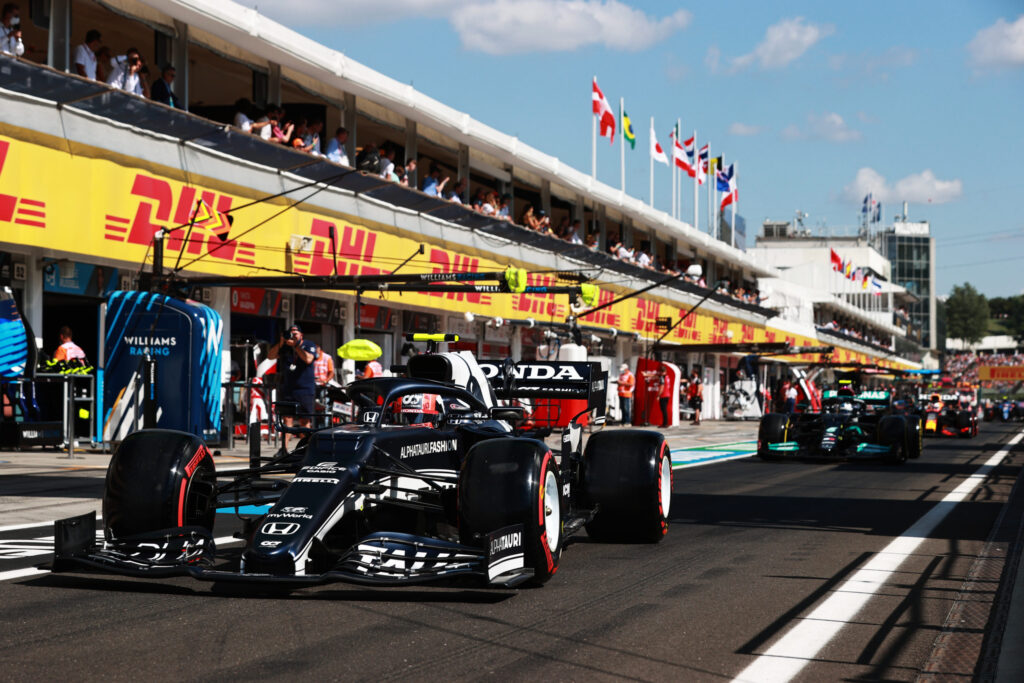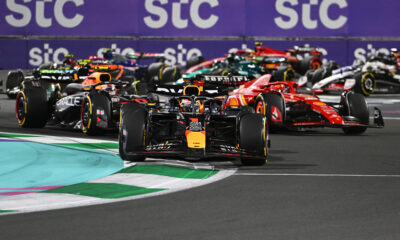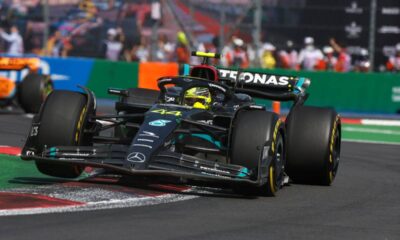Motorsport
F1 Technical Window: What is the ground effect and why was it banned by the FIA?
Ground effect – one of the things without which Formula 1 would hardly exist today, and which plays a very crucial role in the world of F1. But what is the ground effect? And what became so serious in the 1980s that the FIA had to ban it?

Ground effect – one of the things without which Formula 1 would hardly exist today, and which plays a very crucial role in the world of F1. But what is the ground effect? And what became so serious in the 1980s that the FIA had to ban it? The answers to these questions can be found in this article.
Ground effect plays a vital role in the aerodynamics of Formula 1 cars. It is actually a series of aerodynamic effects that help to create more downforce. More downforce then results in a better grip for the car on the race track. If you lose downforce, you lose grip.
There are four things that play the most important role in ground effect in Formula 1 – the floor, the diffuser and the front and rear downforce wings. The diffuser in particular is really closely related to ground effect.
The diffuser is a specially shaped part of the floor, but it must never extend below a specified reference plane. At the same time, the diffuser is one of the most important aspects in the aerodynamics of F1 monoposts.
The diffuser directs the airflow and slows it down to near ambient speeds at the rear. This reduces air turbulence and air resistance. This results in more downforce, and of course also increases the ground effect.
Inside the diffuser, the teams then place the blades. These create very strong vortices that help to reduce the pressure in the diffuser and increase the airflow under the floor.
If we want to use the ground effect as an example, we can certainly mention the front of the McLaren monoposto.
Here we can see the conveyors that bring air to the left or right side of the formula. And the blades are used to generate air exhaust. This makes it work better for the floor, from which the air subsequently leaves better, increasing the ground effect. This results in better grip and stability in corners.
When it comes to the rear of the car, the Ferrari formula is a great example. It is the Italian Maranello stable that uses the Inerter and the so-called third element to stabilise the ground effect. These are components that monitor the calibrations of the car itself to maintain the optimum height from the ground and stabilise the ground effect.
Translated into English, this “suction effect” has been the subject of much controversy, especially in years gone by. The beginning of the ground effect era in Formula 1 was 1978.
It was in this year that the Lotus team completed the much-anticipated Lotus 79. There are various references to the ground effect in earlier years, especially in the late 1960s.
However, even with the technology of the time, the designers could not find a concept that could crack this aerodynamic nut. How to achieve better cornering stability without losing speed? Although designers in those days were trying to understand the behaviour of the air flowing around the car, with new ideas, new problems emerged.
And understanding the behaviour of a car that is slicing the air in front of it as it drives is absolutely key. The engineers’ efforts then produced monsters like the Chaparral 2J, which was part of the overseas Can-Am series.
It wasn’t until the Lotus 79 that the ground effect was somehow harnessed. In the following years, other teams also went in the direction of developing and designing the car to achieve the best possible ground effect.
But the monoblocs were reaching dangerously high speeds in the corners. And that wasn’t the only problem. For this reason alone, however, there were serious crashes. But it didn’t help that as soon as there was even the slightest damage to the car, the formulae immediately lost downforce, so at some points they became de facto uncontrollable.
And this was the second, equally dangerous factor why the concept was banned by the FIA in 1983. Moreover, in the 1970s and 1980s, much more attention was finally paid to driver safety during racing. A fatal crash in 1967 changed everything in this respect.
We are talking about the Monaco Grand Prix. The accident happened in the Nouvelle chicane area, where Lorenzo Bandini crashed into a straw barrier. The fuel in his car ignited and caught fire. However, it was very difficult to extinguish the fire, as the straw near the car also started to burn due to the weather conditions.
This very negative experience caused a major change in the rules and straw barriers were removed from all race tracks. Since then, especially in the 1980s, the safety of the racers has become the number one priority. The Italian pilot succumbed to his injuries and burns after three days.
Yes, ground effect is used in today’s world of Formula One, but on a completely different principle. The difference is that since 1983, every car has had to have a flat floor – no skirting or curtains.
Under current rules, the lowest point of the floor must be the reference plane. This flat composite plate is intended to prevent designers from shaping the underside of the car. The era of variously shaped chassis ended in 1982 after the tragic death of Gilles Villeneuve.
The reference plane in this respect provides exactly the same conditions for all monoposts. And, of course, it has a precisely defined shape and distance from the track surface according to FIA rules. That’s where the difference lies.
The use of the ground effect in the 1970s and 1980s is therefore fundamentally incomparable to what we know today. For all the reasons mentioned above.
Sources: F1, GP Confidential










